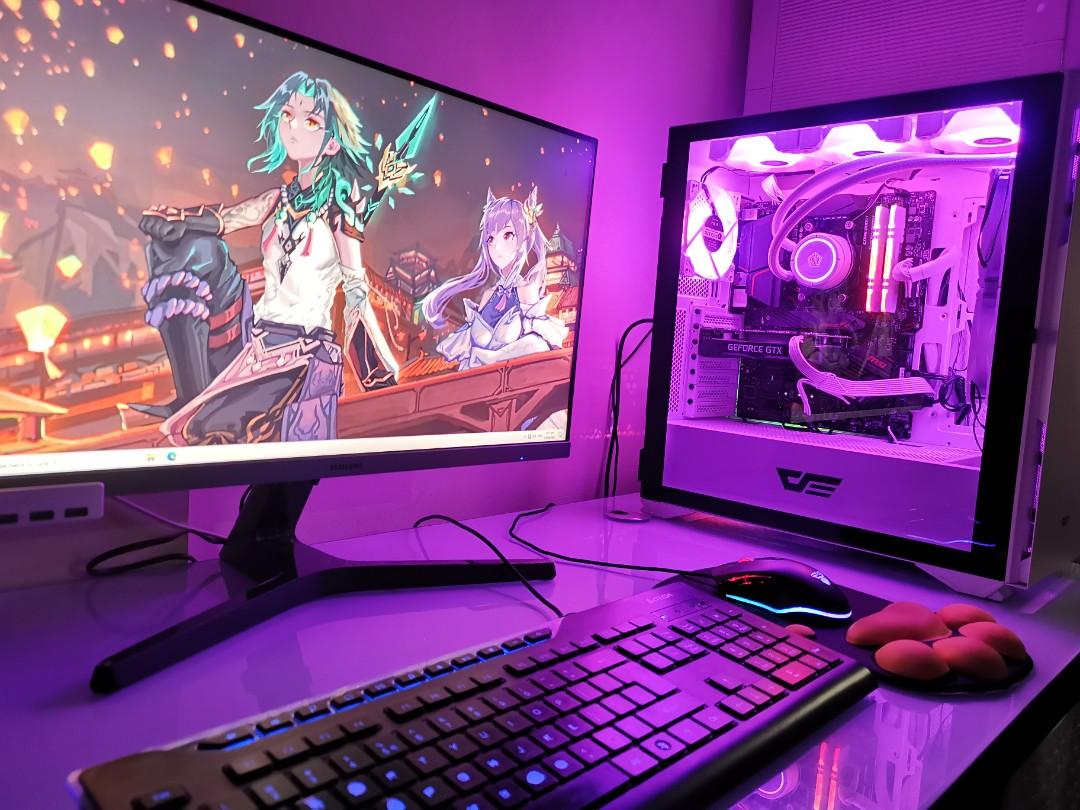
A gaming PC is a big investment, so it’s best to do careful research before purchasing a unit. While it may be a daunting process to buy a gaming PC, it doesn’t have to be too difficult. To help you with this, here is a guide on how to buy a gaming PC.
1 – Start with the processor.
The processor is the first specification you need to check when buying a gaming PC. This component determines how a system will perform in most software.
The core count of the processor is the first thing you need to consider. The options range from two to 16 cores — the higher, the better. With the current pricing, you can find a six-core chip at a great deal, such as the Intel i5-10600K or the AMD Ryzen 5 5600X.
For gaming, a six-core or eight-core chip is ideal. Eight cores or more can do a lot of more high-powered work and run resource-demanding programs. On top of that, most modern games run better at utilizing multiple cores at once. So you definitely want to purchase a processor with a six-core build or higher.
2 – Look for a great GPU.
When you’re serious about gaming, the GPU or graphics card is the hardware component you need to pay the most attention to. It is the component with the biggest hand in improving your favorite games’ graphics, including high frame rates and higher resolutions.
Look at the model numbers when checking the graphics card– the higher numbered cards are, the more it can perform well. However, you should check overclocked models as this can close the performance gaps between its versions.
Here’s an idea of how to check a graphics card. Entry-level GPUs like the AMD RX 570 or NVIDIA GTX 1650 can give you decent performance when playing video games at 1080p. If you play games at 1440p at decent frame rates, you need a more powerful GPU card, such as the RTX 2060 or RX 5700. An ideal GPU is the NVIDIA 3060 Ti.
If you’re interested in 4K gaming for 100+ FPS, you will need to look for a high-end graphics card. Although it might cost you plenty, it will definitely deliver an immersive gameplay experience.
3 – Check on the RAM.
Most modern gaming PCs can run on 16GB RAM. But if you’re only going to games with low system requirements, such as Fortnite or Overwatch, you can get away with an 8GB PC build. By only playing those games, buying 16GB RAM has no point. Any money you spend on buying RAM beyond 16GB can be instead put toward purchasing a component that can further improve the performance of your gaming PC.
Keep in mind that the RAM memory of your unit won’t only be used for playing video games. It involves everything running in the system, from your operating system to your hardware drivers. This is why it is highly recommended by developers to use a gaming PC with higher RAM to allow users to run several programs at the same time.
4 – Choose a solid-state drive.
Most desktop PCs sold in the market come with at least 500 GB hard drives or higher. While it is true that more space is better, it is recommended to focus not only on space but also on performance.
This is where SSDs come in. Solid-state drives run faster than mechanical hard drives. A 512 GB SSD is enough to store Windows, and most of your games and will definitely be able to load your games faster compared to an HDD.
With a decent SSD in your gaming PC, your operating system can boot and be ready to use within 30 seconds. On the other hand, video games that take a minute to load on an HDD can only take 10 to 20 seconds on an SSD. If you need more storage space for your media or video games, consider buying a hard drive for additional storage.
5 – Size matters.
Gaming PCs come in different shapes and sizes. There are small systems that are unobtrusive and can fit in places where large systems can’t. They are perfectly ideal for games that don’t have a large desk. The only downside when choosing a small gaming PC unit is that it can limit future upgrade options. They might also make a lot of noise since they have limited space for cooling.
Mid-tower gaming PCs are ideal for most people. They are small to fit in a typical desk but large enough to offer upgradability. They also have enough cooling space, but you won’t be able to add any color schemes.
Last but not least, a full-tower gaming PC can be a bit pricey over a mid-tower build. And though they might not fit on top of a desk, you will have enough space to put everything you want in them. This can be super helpful when working on upgrading your hardware components.